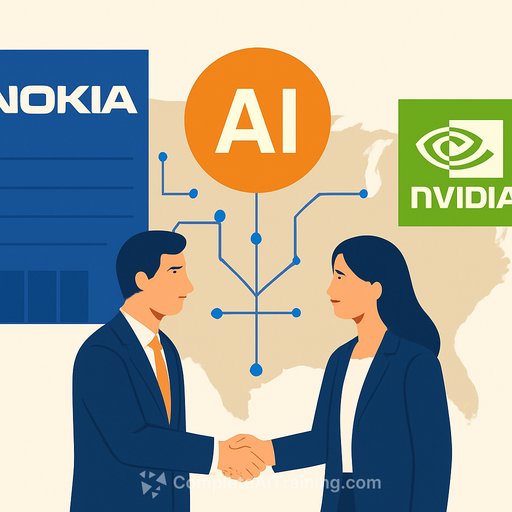Nokia Commits $4B to US-Based AI Network Development: What It Means for Engineers
Finnish company Nokia announced a $4 billion investment in the United States to speed up AI-based network deployment. Of that, $3.5 billion is slated for research and development, and $500 million for manufacturing and capital expenditures in states like Texas, New Jersey, and Pennsylvania. With more than a dozen North American facilities and Bell Labs in New Jersey, the company's new strategy puts artificial intelligence at the center of its operations.
Shifting more production to the US is meant to reduce exposure to tariffs and currency swings while tightening supply chains. Finland's President, Alexander Stubb, noted that the Nokia topic was raised during a White House meeting in October. There were also reports that Nvidia may purchase about a $1 billion stake, which lifted Nokia's shares.
Why this matters for IT and development teams
- Networks are becoming software-first. Expect heavier use of Kubernetes, CNFs, service meshes, and smart NICs in packet processing paths.
- AI will sit across the stack: traffic prediction, RAN scheduling, anomaly detection, closed-loop automation, and energy optimization.
- Data engineering gets central: high-volume telemetry, feature stores for time-series, and real-time inference pipelines (e.g., Triton/ONNX Runtime) near the edge.
- Skill signals: Python/C++/Rust for high-performance paths, DPDK/SR-IOV/eBPF for data planes, Kafka/Flink for streaming, and strong MLOps for model lifecycle in production networks.
- Telco cloud and O-RAN will keep gaining traction. Familiarity with RIC, xApps/rApps, and automation (GitOps, policy engines) will be valuable.
- Security teams will lean on AI for traffic classification, lateral movement detection, and automated response-tied to zero-trust principles.
How the funding likely shows up on the ground
- $3.5B R&D: AI-driven network operations, RAN/CORE optimization, model training with domain-specific data, MLOps tooling, and contributions to open network ecosystems.
- $500M Manufacturing: Capacity build-outs and test labs in TX/NJ/PA for radio, optical, and silicon-centric components that support AI-native networking.
Practical steps to get ahead
- Stand up a lab: k8s cluster with GPU/DPUs, CNF samples, a streaming backbone (Kafka), and a minimal RIC sandbox if you work near RAN.
- Instrument everything: standardized telemetry, traceability, and data quality checks-so models don't degrade quietly.
- Adopt MLOps practices: model registries, shadow deployments, drift detection, and rollback policies for low-latency inference.
- Target performance: learn eBPF, DPDK, and vectorization to keep inference and packet paths fast.
- Contribute where it counts: open networking projects (e.g., O-RAN software communities, telecom automation) signal expertise and shorten hiring cycles.
- Prep for compliance and supply chain controls if you sell into US public sector or critical infrastructure.
Context and resources
- Nokia's research arm remains a key engine for telecom innovation: Nokia Bell Labs
- Upskill by job function with focused AI paths: Complete AI Training - Courses by Job
Bottom line
$4B pointed at US-based R&D and manufacturing is a strong signal: AI-native networks are moving from slide decks to production. If you build, secure, or operate infrastructure, the advantage goes to teams that can blend high-performance systems work with reliable AI pipelines.
Your membership also unlocks:






